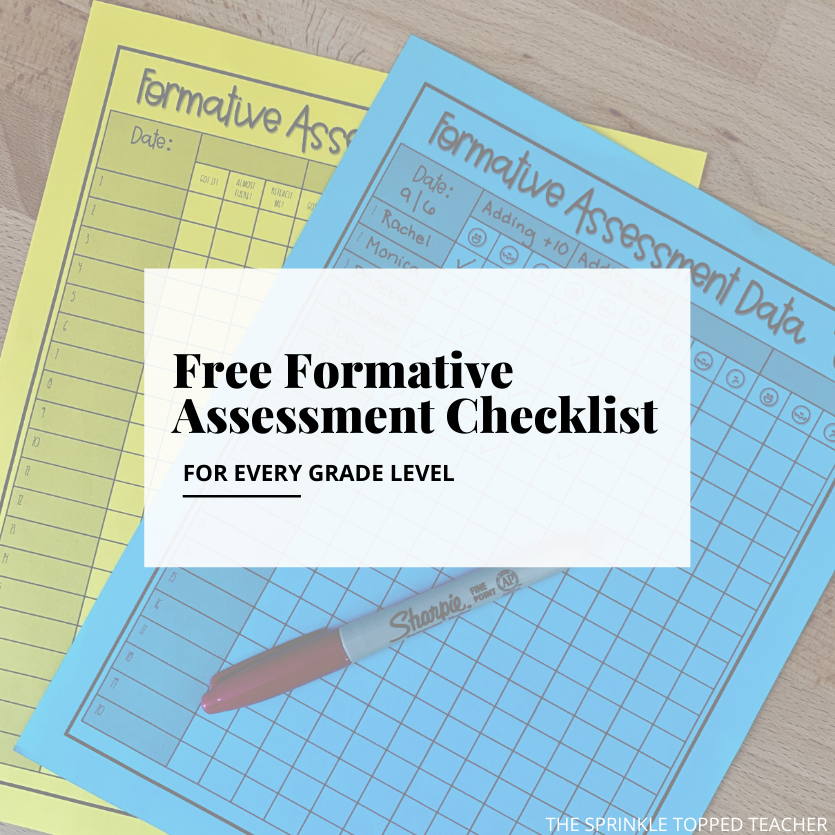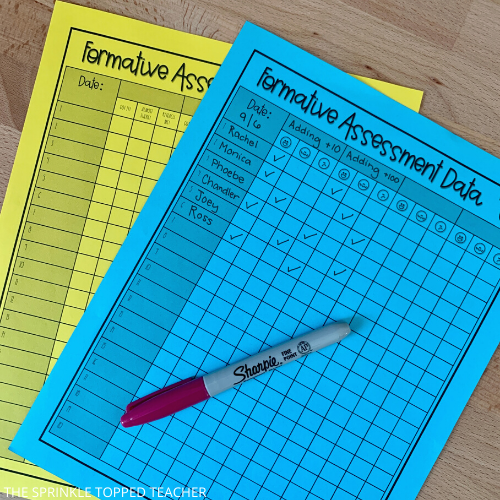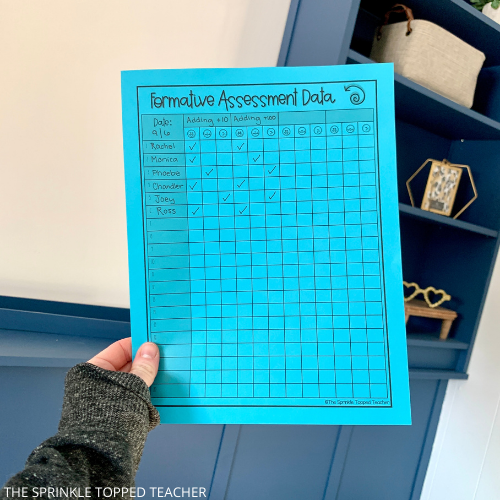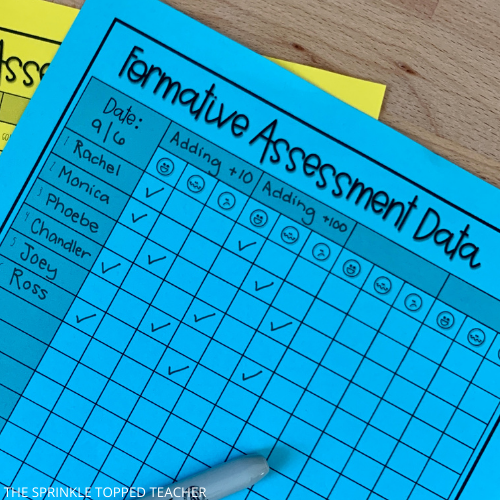
Formative Assessment in the Classroom
In the classroom, it’s super important to know where your students’ heads are at! But keeping track of formative assessment in the classroom can be overwhelming!
If a student is falling behind or struggling to grasp a concept, they will start to feel frustrated if you move ahead too quickly. On the other hand, teaching a student a skill they have already mastered could be just as frustrating. Regardless of whether a skill is a strength or a weakness for your students, you’ll want to write a quick and easy way to record how each student does on their formative assessment of the day.
Trust me, I get it — teachers only have so much time. It can feel difficult and time-consuming to complete a formative assessment in the classroom for each and every student. Whether you assess your students after each lesson, at the end of the day, or otherwise, you want to make sure your formative assessment is both quick and informative. Otherwise, what’s the point?
The good news is that formative assessment in the classroom doesn’t have to suck up all your time. It is completely possible to evaluate your students FAST, so you can start developing great lesson plans.
I have created a free formative assessment checklist for all the teachers out there who want to make sure their students are on track without sacrificing all their time. Just enter your email, first name, and bam! You’ll get your own copy of this free formative assessment checklist. Best of all, you can instantly download it — no waiting around your inbox required. Hooray!

What’s a formative assessment?
Formative assessment in the classroom is a teacher’s process of evaluating students to ensure that learning goals are being met. There are three steps to the formative assessment process:
- Choose the standard you are working on in class.
- At the end of each lesson, complete a quick check activity that will show whether or not each student is understanding the standard.
- Determine which students need more instruction to fully grasp the standard.
The benefits of formative assessments aren’t limited to teachers. Formative assessments are beneficial to students because it gives them a picture of what they need to work on without subjecting them to grading or consequences.
A study by the National Council of Teachers of Mathematics cites, “Formative assessment produces greater increases in student achievement and is cheaper than other efforts to boost achievement, including reducing class sizes and increasing teachers’ content knowledge.”
They also found that “in classrooms where medium- and short-cycle formative assessment was used, teachers reported greater professional satisfaction and increased student engagement in learning.” In short, critique without consequence gets students engaged and motivated to improve!

What can teachers learn from formative assessments?
If you’re writing up a lesson plan and executing it from start to finish without tweaks, you may want to reconsider. Teaching is all about rolling with the punches and tailoring your lessons to fit your students’ needs. Regular formative assessments in the classroom are necessary to developing an effective lesson plan.
I like to pass out a quick formative assessment at the end of each math lesson. That way, I can quickly make adjustments to my lesson plan for the next day, depending on my students’ progress. You may not need to adjust your lesson every time, but it’s important to know when it’s necessary.
Keeping up with formative assessment in the classroom makes sure that small problems don’t turn into BIG problems further down the road. Luckily, you can get your hands on my FREE formative assessment checklist here! This free formative assessment checklist has everything you need to track your students’ progress quickly and easily.

How does my free formative assessment checklist work?
Spoiler alert: this formative assessment checklist is way easier to use than you could imagine! Let’s break it down together:
- Fill in the date of the assessment.
- For each lesson you want to assess, there’s a column. Write the name of the skill/lesson at the top of the column.
- Write your students’ names on the left-hand side of the rows. There’s room for 20 student names, but you can print double-sided for larger classes!
- Assess your students! Mark the box that best reflects how well they comprehend the skill you’re assessing. My free formative assessment download lets you choose which categories suit you best. Choose from categories like, “Got it!, “Almost there!”, and “Reteach me!”, or happy, medium, and sad smiley faces. There’s even a blank version for those who want to completely customize their assessments. It’s totally up to you!
Pro tip: Write your students’ names in once, then make copies to print out as you need them so you don’t have to rewrite their names!
The great thing about these free formative assessment checklists? There is absolutely no writing required when it’s time to assess! Just check the box that best fits the student, and you are done!
Conclusion
If you are looking for an easy way to keep your students on track, my free formative checklist is your solution. Customize it for your lessons to help your students rock their way through class!
Do you use formative assessments regularly in the classroom?